InterLINK (Lohwasser, Angelika)
Interregional Linkage Investigations in Northern Kordofan
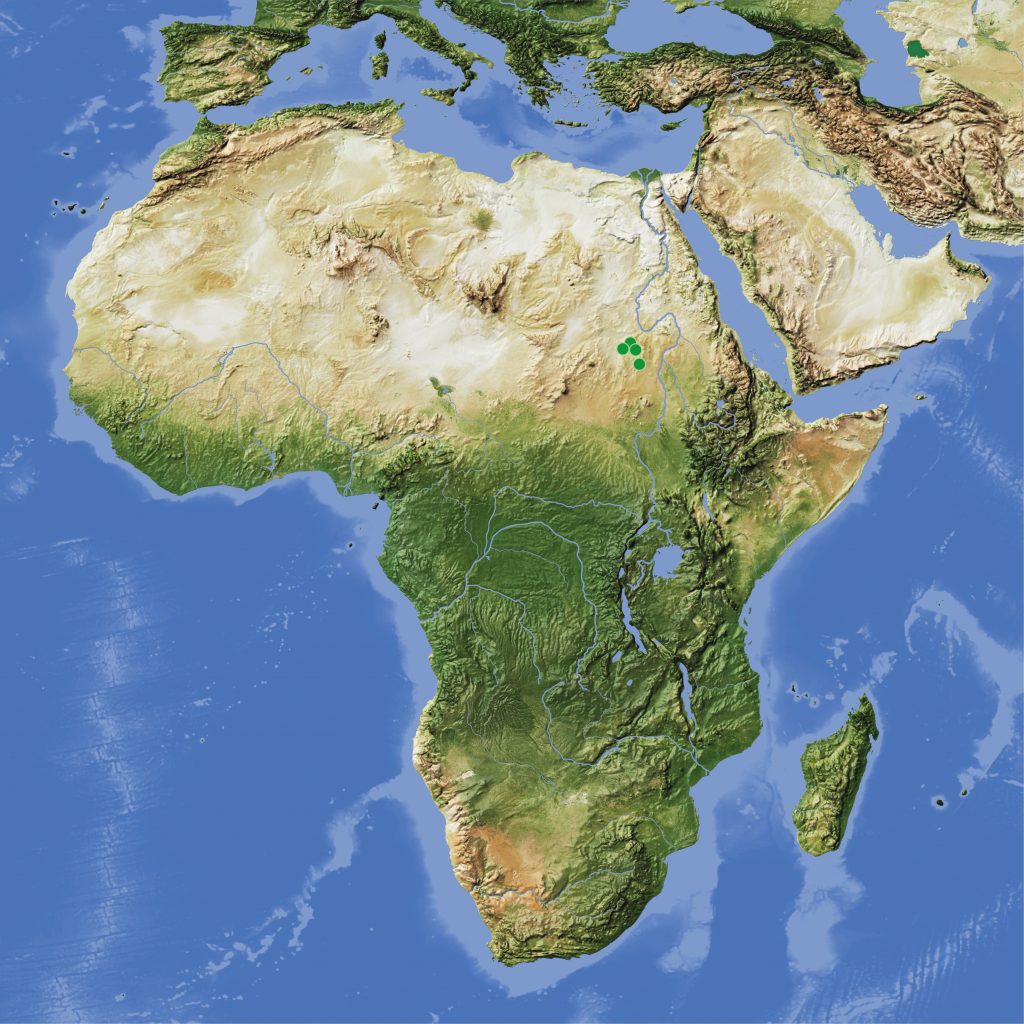
Michael Schmeling, licensed under CC BY 4.0 international, waterbodies © OpenStreetMap contributers, modification by Johanna Sigl
Project description
The relation between the ancient as well as the medieval cultures of the Nubian Nile valley, and the contemporary African Iron Age cultures of the Chad basin and other parts of the Sahel region has for long been subject of scientific debates. New light was shed on the integration of the cultures of the Nubian Nile valley into an east-west contact zone by some discoveries made in 2011 and 2017 by the intended field director Jana Eger. At Jebel al-Ain in North-Kordofan a Christian complex, most probably monasteries, as well as several archaeological sites were identified. This archaeological record indicates a close connection of this cultural landscape with the (250 km distant) Nile River. The InterLINK project will clarify the questions which arose in the aftermath of these archaeological discoveries, concerning the role of Northern Kordofan as a cultural-historical contact zone – short ranged (connection of the Jebel al-Ain region to the Nile valley and the ancient Kordofanic cultures with the center Zankor) as well as long ranged (the role of Northern Kordofan as a contact zone between the Nile valley cultures and the cultures of the Sahel belt, especially around the Chad basin).This will be achieved by investigations on these questions:
- Where can ecologically favored zones are identified? Are they possible nuclei and crystallization points of cultural-historical developments?
- How are the relations between (rather linear) macro-communication and (rather network shaped) micro-communication? Are there material remains of historical traffic networks where long ranged travel (like caravan trade) and short ranged travel (like in pastoral or transhumant economical concepts) can be differentiated from each other?
- Can any identified macro-communication patterns be connected to interregional technology transfer? This concerns especially the question of mutual influence or independent development of iron smelting technologies in the Meroitic and the West-African (or Chad basin) cultures.
- To what extend cultural connections between Northern Kordofan, especially the Jebel al-Ain region, and the Nile valley document a political and administrative control of this periphery by the organized Nile-based states? Are there any differentiations concerning this question between the Iron Age and the medieval Nubian states? For the Iron Age, investigations of water harvesting installations (hafirs) which closely resemble similar constructions in the Keraba can contribute to a clarification, since their possible role as instruments of central political control over the Keraba is debated controversially. For the medieval period, investigations of the Christian complex can provide information about the extent of direct influence of Christian dominated statehood on that desert region.
Project members
Prof Dr. Angelika Lohwasser
Applicant/Project Director
Westfälische Wilhelms-Universität Münster / Institute of Egyptology and Coptology
a.lohwasser@uni-muenster.de
Field Director
Westfälische Wilhelms-Universität Münster / Institute of Egyptology and Coptology
jana.eger@uni-muenster.de
Link:
https://www.uni-muenster.de/IAEK/personen/eger.html
Dr. Tim Karberg
Research Fellow
Westfälische Wilhelms-Universität Münster / Institute of Egyptology and Coptology
timkarberg@uni-muenster.de
Posts

Report on SPP Entangled Africa Annual Meeting in Münster
Allgemein EN, P01 Prehistoric Axes EN, P02 Connecting Foodways EN, P03 InterLINK EN, P04 Lake Chad EN, P05 Landscapes EN, P06 DeGreening EN, P07 Routes of Interaction EN, P08 ClimCellMed EN, P09 Borrowed words EN, P10 Congo Basin EN, P11 FDM EN, P12 Coordination, P13 Tracing Connections EN![[Attribution: unknown; Copyright: not defined] D-DAI-KAAK-2024-JS-0063-PlanetAfrica_Eroeffnung_BER](https://www.dainst.blog/entangled-africa/wp-content/uploads/sites/11/2024/12/D-DAI-KAAK-2024-JS-0063-PlanetAfrica_Eroeffnung_BER-scaled-e1734001679313-247x163.jpg)
“Planet Africa” in the James Simon Gallery: Exhibition Opening and Press Reviews
Allgemein EN, P01 Prehistoric Axes EN, P02 Connecting Foodways EN, P03 InterLINK EN, P04 Lake Chad EN, P05 Landscapes EN, P06 DeGreening EN, P07 Routes of Interaction EN, P08 ClimCellMed EN, P09 Borrowed words EN, P10 Congo Basin EN, P11 FDM EN, P12 Coordination, P13 Tracing Connections EN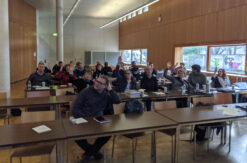
SPP Annual Meeting 2024 in Cologne
Allgemein EN, P01 Prehistoric Axes EN, P02 Connecting Foodways EN, P03 InterLINK EN, P04 Lake Chad EN, P05 Landscapes EN, P06 DeGreening EN, P07 Routes of Interaction EN, P08 ClimCellMed EN, P09 Borrowed words EN, P10 Congo Basin EN, P11 FDM EN, P12 Coordination, P13 Tracing Connections EN![[Attribution: ; Copyright: ] KAAK-SPP2143-TN-2023_Jahrestagung_Frankfurt_01-2022-8](https://www.dainst.blog/entangled-africa/wp-content/uploads/sites/11/2023/01/KAAK-SPP2143-TN-2023_Jahrestagung_Frankfurt_01-2022-8-247x163.jpg)
SPP Annual Meeting at the Goethe-University Frankfurt from 16th to 17th January
Allgemein EN, P01 Prehistoric Axes EN, P02 Connecting Foodways EN, P03 InterLINK EN, P04 Lake Chad EN, P05 Landscapes EN, P06 DeGreening EN, P07 Routes of Interaction EN, P08 ClimCellMed EN, P09 Borrowed words EN, P10 Congo Basin EN, P11 FDM EN, P12 Coordination, P13 Tracing Connections EN![[Attribution: J. Sigl; Copyright: Entangled Africa, KAAK] 2022-01-10_Teilnehmende07](https://www.dainst.blog/entangled-africa/wp-content/uploads/sites/11/2022/01/2022-01-10_Teilnehmende07-247x163.jpg)
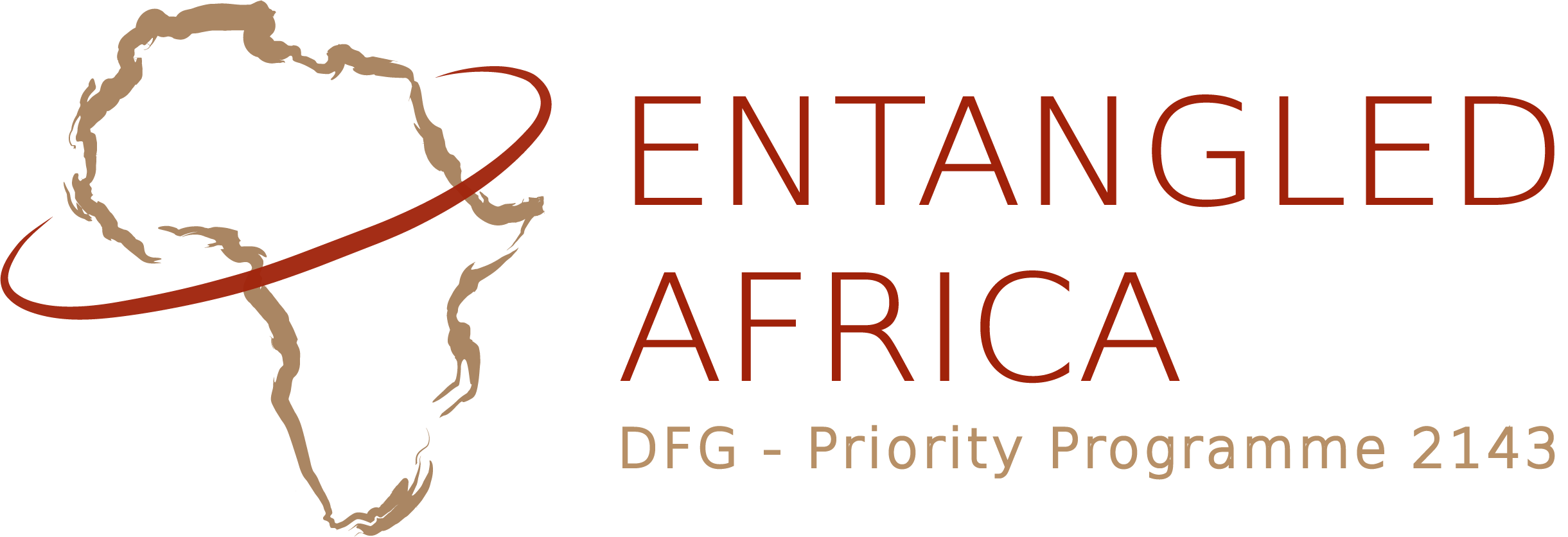
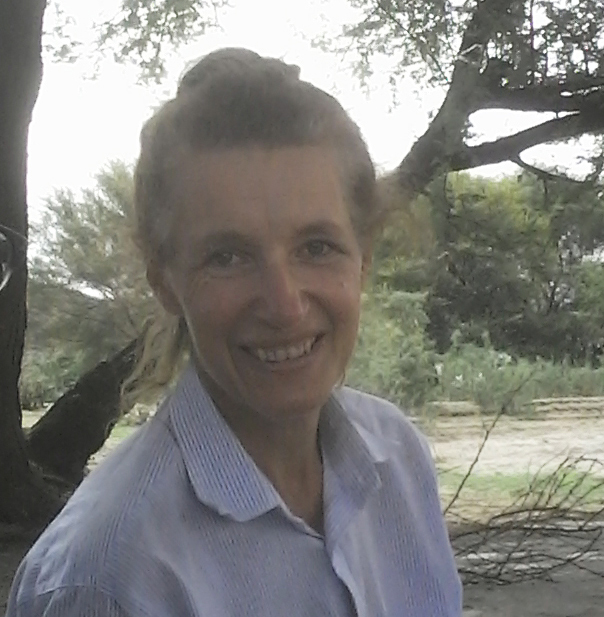

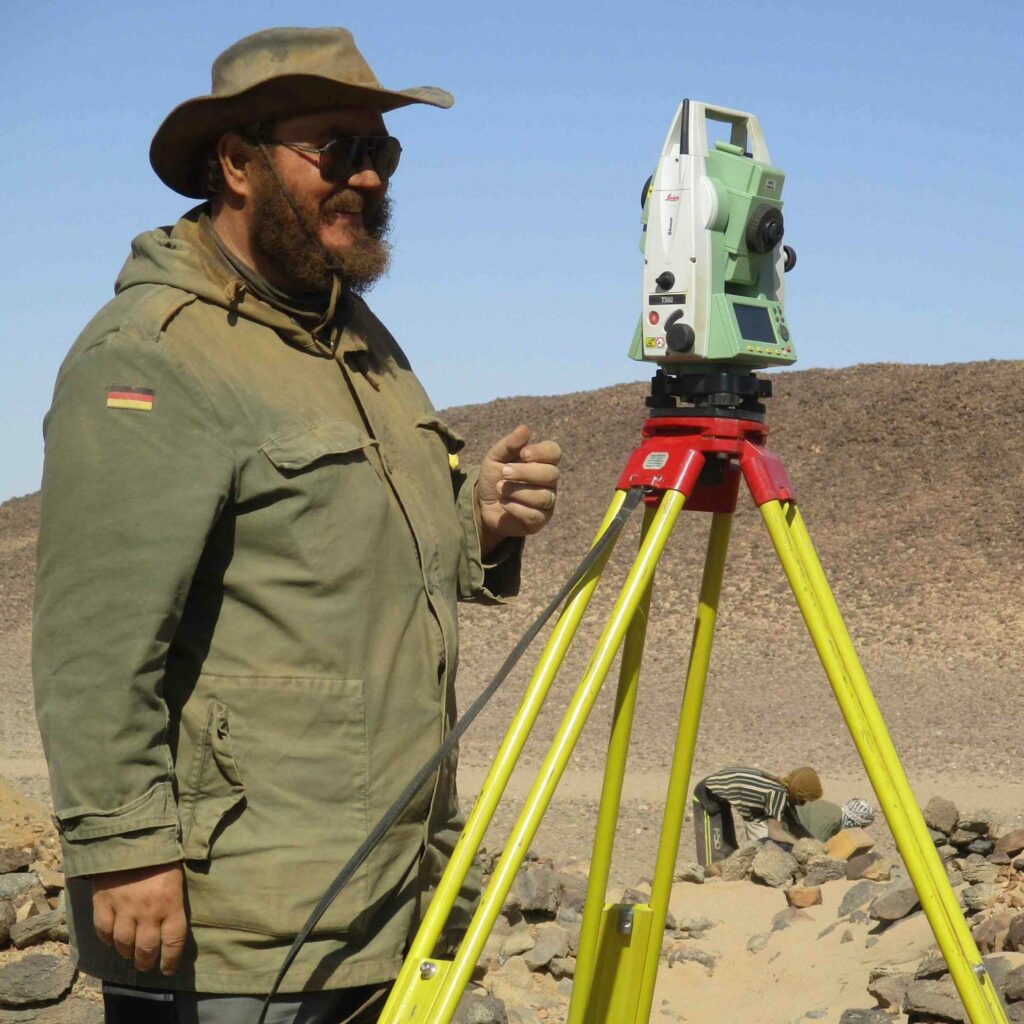
![[Attribution: ; Copyright: ] DCIM100MEDIADJI_0067.JPG](https://www.dainst.blog/entangled-africa/wp-content/uploads/sites/11/2023/03/KAAK_SPP2143_MG_2023_NCAM_Schulung_0067-247x163.jpg)
![[Attribution: ; Copyright: ] Screenshot 2023-01-19 091612](https://www.dainst.blog/entangled-africa/wp-content/uploads/sites/11/2023/01/Screenshot-2023-01-19-091612-247x163.png)
![[Attribution: T. Karberg; Copyright: T. Karberg] Sudantag 2022](https://www.dainst.blog/entangled-africa/wp-content/uploads/sites/11/2022/08/Sudantag-2022-247x163.jpeg)
![[Attribution: unknown; Copyright: not defined] Frankfurt 2022](https://www.dainst.blog/entangled-africa/wp-content/uploads/sites/11/2022/08/Frankfurt-2022-247x163.jpg)
![[Attribution: Sandra Steiß; Copyright: SMB Ägyptisches Museum und Papyrussammlung] Einladung-Invitation_Sudantag-SudanDay2022-18Juni-June_Final](https://www.dainst.blog/entangled-africa/wp-content/uploads/sites/11/2022/05/Einladung-Invitation_Sudantag-SudanDay2022-18Juni-June_Final-247x163.jpg)
![[Attribution: Polish Centre of Mediterranean Archaeology, University of Warsaw; Copyright: Polish Centre of Mediterranean Archaeology, University of Warsaw] Screenshot 2021-11-24 at 18-06-50 Home – 15th International Conference for Nubian Studies](https://www.dainst.blog/entangled-africa/wp-content/uploads/sites/11/2021/11/Screenshot-2021-11-24-at-18-06-50-Home-15th-International-Conference-for-Nubian-Studies-e1639656248975-247x163.png)
![[Attribution: ; Copyright: ] csm_Main_Slider_PK_neu_07-10-21_ddd27b69dd](https://www.dainst.blog/entangled-africa/wp-content/uploads/sites/11/2021/10/csm_Main_Slider_PK_neu_07-10-21_ddd27b69dd-1-247x163.jpg)
![[Attribution: unknown; Copyright: SAfA 2021] SAFA banner](https://www.dainst.blog/entangled-africa/wp-content/uploads/sites/11/2021/08/safa_banner_6_2021_von-Webseite-247x163.jpg)
![Daten & Folie: Mansour Mdawar, Projekt KlimZellMit [Attribution: J. Sigl; Copyright: KAAK] 2021-05-11_03](https://www.dainst.blog/entangled-africa/wp-content/uploads/sites/11/2021/06/2021-05-11_03-e1622808364550-247x163.jpg)
![[Attribution: ; Copyright: ] Estelle](https://www.dainst.blog/entangled-africa/wp-content/uploads/sites/11/2021/01/Estelle-1-247x163.png)
![[Attribution: ; Copyright: ] Bild_1a](https://www.dainst.blog/entangled-africa/wp-content/uploads/sites/11/2020/09/Bild_1a-scaled-e1599479215658-247x163.jpg)
![[Attribution: ; Copyright: ] HVU-09-0210 (HMD 20101117_C_006).jpg](https://www.dainst.blog/entangled-africa/wp-content/uploads/sites/11/2020/07/HVU-09-0210-HMD-20101117_C_006.jpg-247x163.jpg)
![[Attribution: ; Copyright: ] CFW_PH_200215_005b](https://www.dainst.blog/entangled-africa/wp-content/uploads/sites/11/2020/06/CFW_PH_200215_005b-247x163.jpg)
![[Attribution: ; Copyright: ] Foto (1)](https://www.dainst.blog/entangled-africa/wp-content/uploads/sites/11/2020/06/Foto-1-247x163.jpg)
![[Attribution: ; Copyright: ] WAC_Prag_Titelbild](https://www.dainst.blog/entangled-africa/wp-content/uploads/sites/11/2020/01/WAC_Prag_Titelbild-247x163.jpg)
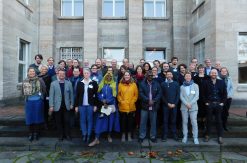
![[Attribution: ; Copyright: ] DAI_KAAK_191214_SudanTag_Berlin_JL-6-1](https://www.dainst.blog/entangled-africa/wp-content/uploads/sites/11/2019/12/DAI_KAAK_191214_SudanTag_Berlin_JL-6-1-247x163.jpg)
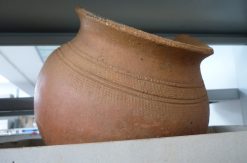
![[Attribution: ; Copyright: ] Screenshot 2023-10-12 at 10-36-28 SARS_SN26_Eger-Karberg.pdf](https://www.dainst.blog/entangled-africa/wp-content/uploads/sites/11/2023/10/Screenshot-2023-10-12-at-10-36-28-SARS_SN26_Eger-Karberg.pdf-247x163.png)
![[Attribution: ; Copyright: ] Antike_Sudan_Titel](https://www.dainst.blog/entangled-africa/wp-content/uploads/sites/11/2020/12/Antike_Sudan_Titel-1-247x163.jpg)
![[Attribution: ; Copyright: ] Antike_Sudan_Titel](https://www.dainst.blog/entangled-africa/wp-content/uploads/sites/11/2020/12/Antike_Sudan_Titel-247x163.jpg)
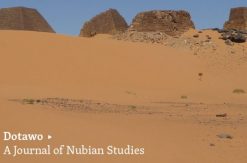
![[Attribution: ; Copyright: ] Der Antike Sudan](https://www.dainst.blog/entangled-africa/wp-content/uploads/sites/11/2020/01/Der-Antike-Sudan-e1617196632793-247x163.png)
![[Attribution: ; Copyright: ] P03_The Archaeology of medieval islamic frontiers](https://www.dainst.blog/entangled-africa/wp-content/uploads/sites/11/2021/04/P03_The-Archaeology-of-medieval-islamic-frontiers-e1617269624899-247x163.jpg)